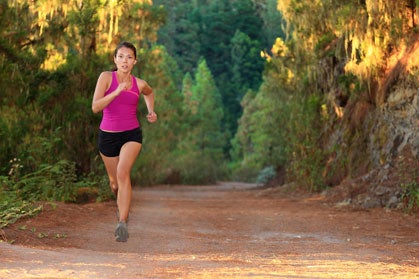Developing a Training Plan Part II: Effort

The key elements of a successful training plan are just like the corner pieces of a jigsaw puzzle—find them and it’s easier to fill in the rest.
Photo courtesy of Bigstockphoto.com
The key elements of a successful training plan are just like the corner pieces of a jigsaw puzzle—find them and it’s easier to fill in the rest.
Through my experiences as a running coach and elite runner, I’ve identified four training “corner pieces” that will help you to develop reliable and predictable performances: simulation, effort, consistency and lifestyle. Last month, I discussed simulation (you can read that post here); this month’s segment is effort.
As I have said before, the corner pieces are not groundbreaking findings; they are simply tried-and-true training techniques that, when interlocked, will help you achieve running success.
Identifying Effort
We’re all guilty … of focusing too much on what we enjoy and/or what we’re good at, while neglecting our weaknesses or the things that just aren’t fun. As trail runners, we often skimp on speed training in exchange for logging miles and exploring beautiful places. If you are training to race, performing a variety of workouts at different effort levels is vital for efficiency across all energy systems utilized during a race. Your training plan should include training-pace runs, long runs, thresholds, hill repeats and intervals, all to capitalize on aerobic (endurance) and anaerobic (speed) efficiency.
Base Building
When I begin working with new runners, I focus the first couple of training weeks on simply logging miles (creating a base) to lay down a foundation of aerobic potential. The phase is comprised of training runs performed at an effort level called “conversation pace.” Conversation pace is the bread and butter of long-distance training. It strengthens your cardiovascular, muscular and skeletal systems—all of which are essential for strong and healthy running.
When you are preparing for a race, though, anaerobic fitness is also crucial. Anaerobic efficiency is best achieved by incorporating speed sessions into your training. Consistent speed work increases your body’s ability to carry oxygen to your brain and muscles more efficiently when under-fire, like when you’re trying to shake off a challenging competitor come race day.
3-2-1 Drill (Fartleck)
Trail races include undulating terrain that forces you to run through different heart rate zones. The more you can simulate running within those zones in training, the better your body will respond to them during a race. For fun speed days, I often assign clients my 3-2-1 Drill. I love this fartleck workout because it focuses on running fast within a longer run, allowing you to reap both aerobic and anaerobic benefits. The sequence of running hard, easy, hard, easy, etc. teaches your body to fluctuate efficiently between high and moderately high heart rate zones.
The workout:
-15- to 30-minute warm up
-Repeat the following circuit three times, completing “hard” segments first at half-marathon pace, then 10K pace and then 5K pace.
- 3 minutes hard
- 2 minutes training pace (recovery)
- 2 minutes hard
- 1 minute training pace (recovery)
- 1 minute hard
- 30 seconds training pace (recovery)
- 30 seconds hard
- 30 seconds training pace (recovery)
-15- to 30-minute cool down
(Note: If you are training for a marathon distance and above, add a 5-minute hard segment to the front end of the 3-2-1.)
Tune Out and Breathe
In a technologically advanced and obsessive age, it’s easy to get so distracted by things like the new song on our iPod, the beep of our GPS-enabled watch when we’ve run another mile, or the calories-burned feature on our heart-rate monitor that we forget to listen to our bodies and the important signals they send us.
“I thought music was helping me through hard runs, but I realized it was actually limiting my ability to pay attention to hitting my target pace,” says Barbara Felton, a client of mine from San Mateo, California. “After I gave up the music on my threshold runs, my pace was much more consistent and I was able to recognize that effort level and apply it to my next workout.”
Recognizing how you feel during various efforts (half-marathon pace vs. conversational pace, for example) allows you to familiarize yourself with the appropriate pace for the workout at hand so that you are able to reap optimal benefits. This recognition requires focus, which can mean a minimization of external distractions.
Sensation is often a much more important marker than your heart-rate monitor indicates. Running with a heart-rate monitor can be helpful in determining your personal “sweet spot” for various intensities. However, keep in mind that many factors (sleep, work, stress, diet, etc.) cause your body to feel differently from day to day, so technologically generated figures cannot always provide accurate effort-level information for a particular run.
Instead, pay attention to your breath. One of the best indicators of perceived exertion is simply the sound of your breathing. For example, it should sound much more labored during a 5K race than during a threshold run.
Familiarize yourself with varying efforts by listening to your body’s cues and applying that knowledge to subsequent workouts. And remember, running workouts too fast can lead to an increase in necessary recovery time, making you too tired for the next scheduled run and preventing you from gaining the optimal benefit from your training cycle.
Megan Lizotte is an elite distance runner and online running coach at www.hgrunning.com. She is a three-time World Mountain Running Championships competitor, two-time Olympic Marathon Trials qualifier and the 2011 USATF Trail Marathon Champion.